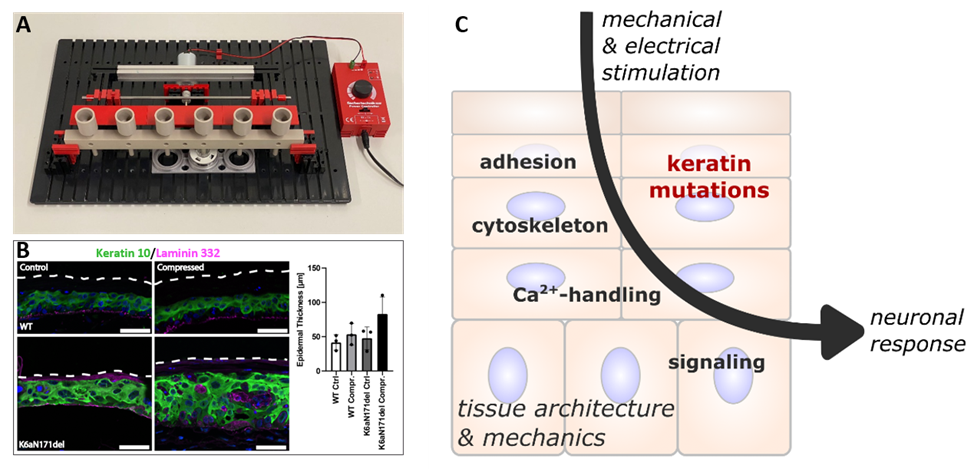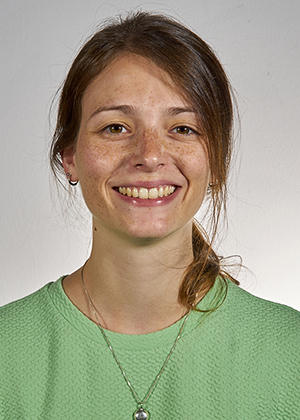Consequences of keratin mutations on epidermal tissue mechanics and mechanoresponses
Institute of Molecular and Cellular Anatomy (MOCA), Uniklinik RWTH Aachen

Project overview. (A) shows the high throughput compression devise designed and constructed by the team of Horst Fisher (project area D). (B) highlights the altered response in Pachyonychia congenita (PC)-derived epidermal equivalents. The fluorescence micrographs show sections of wild-type (WT)- and PC-derived (K6aN171del) skin models that were subjected to cyclic compression (47 mbar, 150 mHz, 1h/day, 5 days) or not. The epidermal equivalents were immunostained 4 days after mechanical stress with antibodies against laminin 332 (magenta) to delineate the basement membrane and against keratin 10 (green) to indicate vital suprabasal epidermal layers. Nuclei are stained with Hoechst 33258 (blue). The outermost border of the stratum corneum is demarcated by a dashed line. Scale bars, 50 µm. The histogram at right quantifies the mechanical stress-induced enlargement of the epidermal compartment (including the stratum corneum) in the PC-derived model (mean ± SD). (C) summarizes aspects that are addressed experimentally in the project.









